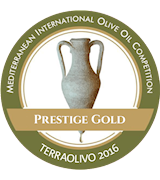Best Northeastern Brazilian Foods
MAIN INGREDIENTS
A classic dish of the Brazilian Bahia region, bobó de camarão is a stew made with puréed cassava (bobó), fresh shrimps, coconut milk, and dendê palm oil. The word bobó comes from the Ewe people who were brought to Brazil as slaves, denoting a dish made with beans, although there are no beans in bobó de camarão as we know it today, due to the fact that the Afro-Brazilians enthusiastically took to cassava when they were first introduced to it.
The dish is traditionally accompanied by rice on the side, and is a staple of most traditional Brazilian eateries and Bahian self-service restaurants.
Queijo de coalho is a traditional cow's milk cheese from the northeastern regions of Brazil. The cheese is characterized by its firm, yet elastic texture and a slightly yellow color. Coalho is often sold on sticks for roasting, because it can withstand high temperatures and does not melt easily.
Its flavor is salty and acidic, making it an ideal snack on numerous Brazilian beaches, where it is usually grilled and sprinkled with oregano.
MAIN INGREDIENTS
Moqueca Baiana is a seafood stew originating from the Brazilian state of Bahia, hence the word Baiana in its name. It consists of white fish, shrimps, or other seafood combined with coconut milk, dendê oil, lime juice, and various vegetables such as red and yellow peppers, tomatoes, spring onions, garlic, onions, and sometimes ginger.
When done, the dish is typically garnished with chopped coriander, then served with rice and farofa. This seafood stew was originally prepared by the native people of Brazil. Over time, new elements were added to the stew, such as coconut milk, which was first introduced to Brazil by Portuguese colonists, and palm oil, which was brought over to the country by African slaves.
OTHER VARIATIONS OF Moqueca
MOST ICONIC Moqueca Baiana
View moreMAIN INGREDIENTS
Baião is a traditional folk dance of the Brazilian Ceará region, which was popularized by two musicians, Humberto Teixeira and Luís Gonzaga, in a song called Baião-de-dois (baião for two). The name of the song attached itself to the dish of the same name, consisting of freshly picked black-eyed peas and rice cooked together, reminiscent of a couple dancing the baião.
The dish has numerous varieties throughout the region, so some cooks add dried beef (carne de sol), while the others add pork or cheese to the combination. Garnishes may include freshly chopped coriander and chives. The history of the dish dates back to the time of great difficulties, when food was scarce and nothing could go to waste, so, like many other dishes, this one was also created out of necessity, combining rice, beans, and kitchen leftovers.
Rich, substantial, and tropically flavored - vatapá is one of the most famous Brazilian dishes, a main course consisting of a combination of stale bread, fish (usually cod), shrimp, coconut milk, manioc flour, dendê palm oil, and cashews.
The dish is often consumed with white rice, or as a filling for acarajé fritters, another popular Brazilian dish. Bright yellow in color, vatapá is a specialty of Bahia, a state on the country's northeastern coast that is heavily influenced by the West Africans who were brought to the country as slaves.
Arrumadinho is a complex Brazilian dish that is usually served as an appetizer. The dish is a combination of four elements that are neatly organized and served together as a complete meal. The essential parts are sliced, sun-dried beef, diced and mixed vegetable vinaigrette, beans, typically black eyed peas, and farofa – a toasted cassava flour mixture.
All of the ingredients are seasoned with clarified butter, neatly arranged and served on a plate. The four elements of arrumadinho can either be mixed or consumed as individual dishes. A plate of arrumadinho is usually shared by a couple or a group of people, typically followed by a glass of cold beer or a freshly prepared caipirinha.
MOST ICONIC Arrumadinho
View moreMAIN INGREDIENTS
Bolo de rolo is a traditional dessert with origins in the state of Pernambuco. This rolled guava cake is similar to a jelly roll cake or a Swiss roll; however, its preparation is much more complicated. It incorporates many delicate and thin sponge layers which are connected to form a giant sheet, spread with a layer of sweet guava jam, then rolled into a log.
The most elaborate varieties of bolo de rolo can have up to twenty layers of sponge, which results in an unusual decorative spiral. Because of the intricate and time-consuming preparation, it is rarely made at home and can usually be found in pastry shops and supermarkets around Brazil.
MOST ICONIC Bolo de rolo
View moreMAIN INGREDIENTS
Cartola is a traditional dessert originating from Pernambuco, but popular across the country – it can be found both in restaurants and home kitchens. The name of the dish means top hat. It's made with sweetened and fried bananas in combination with cheese.
The cheese should brown and bubble, but not melt, so queijo coalho cheese is most often used for this dish. In texture, it's like a firm feta, but without the saltiness in flavor. The bananas are cut lengthwise, then fried in butter, while the cheese is sprinkled with a combination of sugar and cinnamon before it's heated through.
MOST ICONIC Cartola
View moreA staple of Northeastern Brazil, carne de sol (lit. meat of the sun) - sometimes also called carne de sereno or simply jabá - refers to heavily salted, sun-dried meat. Carne de sol is traditionally prepared with either beef or goat meat, and the origins of this centuries-old meat preservation method are attributed to the so-called sertanejos, cattle ranchers living in the vast, semi-arid Brazilian hinterlands.
Today, carne de sol is a delicacy found all across the country and, if not grilled or cubed and used in various stews, it is typically served with coalho cheese and accompanied by a thick manioc gruel called pirão or boiled cassava.
MOST ICONIC Carne de sol
View moreMAIN INGREDIENTS
In Bahia, the northeastern state of Brazil, there is a dish that is considered to be the most popular street food around, called acarajé. It consists of black-eyed peas or cowpeas that are formed into a ball, deep-fried in dendé palm oil, split in half, then stuffed with flavorful, spicy pastes made from numerous ingredients such as cashews, palm oil, and shrimp.
The most common accompaniments to the dish include a tomato salad and homemade hot pepper sauces. The recipe for the dish originated during the colonial period of the country, from the Nigerian slaves who first started selling it on the streets of Brazil.
MOST ICONIC Acarajé
View moreBest Northeastern Brazilian Food Producers
AWARDS

Decanter World Wine Awards - Platinum
2021

Concours Mondial de Bruxelles - Grande Médaille d'or
2021
BEST Bodegas Ugalde Wines
AWARDS

SFWSC - San Francisco World Spirits Competition - Double Gold
2024
BEST Viçosa Real Liqueurs
AWARDS

World Beer Awards - Gold
2023
BEST Proa Cervejaria Beers
AWARDS

Terraolivo IOOC - Prestige Gold
2016
BEST Azeitonas E Azeite Gralha De Campo Malor Lda Olive Oils
AWARDS

Concours Mondial de Bruxelles - Grande Médaille d'or
2020
BEST Bodegas Valdebarón Wines
AWARDS

Decanter World Wine Awards - Platinum
2022, 2021
BEST Bodegas Ondarre Wines
AWARDS

Academy of Chocolate - Bronze
2023

Academy of Chocolate - Silver
2024

Academy of Chocolate - Gold
2024
BEST Kaê Chocolates Chocolates
AWARDS

Academy of Chocolate - Bronze
2024, 2023

Academy of Chocolate - Silver
2024

Academy of Chocolate - Gold
2024
BEST Ju Arléo Chocolates Chocolates
AWARDS

Academy of Chocolate - Silver
2024
BEST Modaka Cacau Chocolates
Best Northeastern Brazilian Food Products
AWARDS

SFWSC - San Francisco World Spirits Competition - Double Gold
2024
Kaê Cumaru - 55% com Cumaru is a smooth and aromatic milk chocolate infused with Cumaru, also known as "Brazilian tonka bean." This unique ingredient adds warm, vanilla-like notes with hints of almond and spice, enhancing the richness of the 55% cacao blend.
A delicate balance of sweetness and complexity, perfect for an indulgent experience.
AWARDS

Academy of Chocolate - Gold
2024
AWARDS

Academy of Chocolate - Gold
2024
AWARDS

World Beer Awards - Gold
2023
AWARDS

World Beer Awards - Gold
2023
AWARDS

World Beer Awards - Gold
2023
AWARDS

Terraolivo IOOC - Prestige Gold
2016
AWARDS

Concours Mondial de Bruxelles - Grande Médaille d'or
2020
AWARDS

Concours Mondial de Bruxelles - Grande Médaille d'or
2020
AWARDS

Concours Mondial de Bruxelles - Grande Médaille d'or
2021
TasteAtlas food rankings are based on the ratings of the TasteAtlas audience, with a series of mechanisms that recognize real users and that ignore bot, nationalist or local patriotic ratings, and give additional value to the ratings of users that the system recognizes as knowledgeable. For the “Top 72 Northeastern Brazilian Foods” list until March 27, 2025, 1,529 ratings were recorded, of which 1,087 were recognized by the system as legitimate. TasteAtlas Rankings should not be seen as the final global conclusion about food. Their purpose is to promote excellent local foods, instill pride in traditional dishes, and arouse curiosity about dishes you haven’t tried.










































































